The best camera harness
Protect your neck, back and shoulders from pain, with the best camera harnesses for outdoor photography shoots
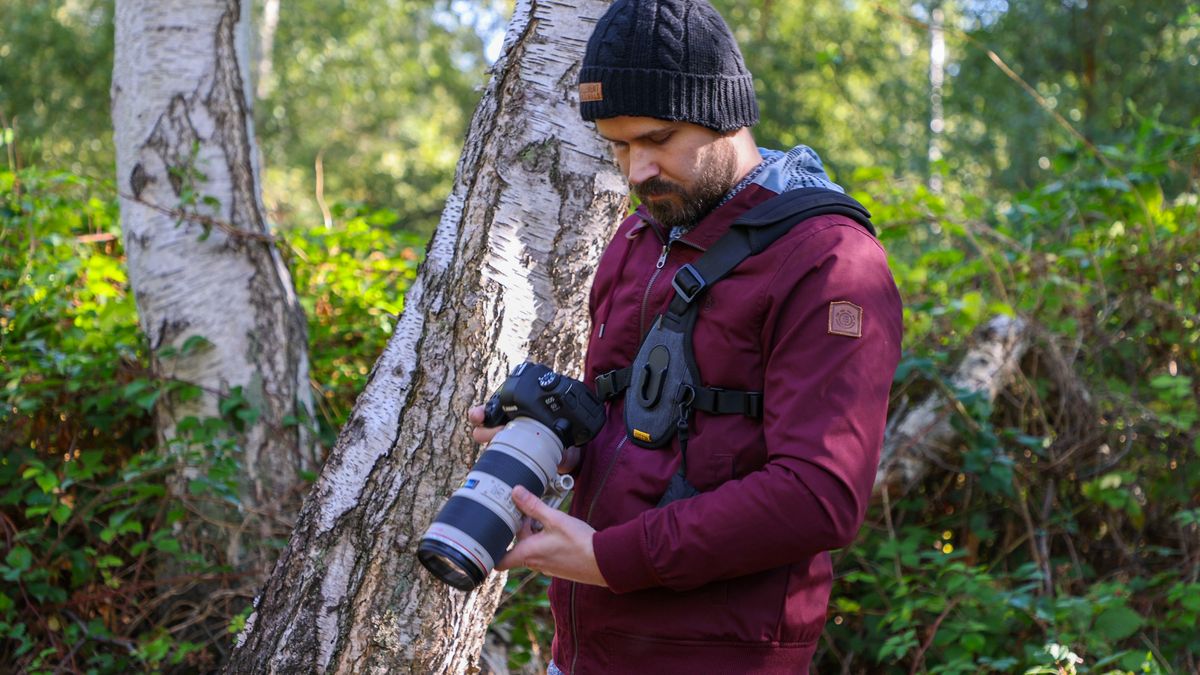
The best camera harnesses give you easy and quick access to up to two cameras simultaneously. They'll also help you avoid a sore neck or back after going out on a shoot.
Because let's be real: cameras are heavy. Whether we're talking DSLRs or a mirrorless camera, especially with a zoom lens, it’s a considerable weight to hang around your neck if you rely only on the neck strap in the box. So while it's good to invest in the best camera bags, best camera backpacks, best camera holsters and the best camera straps, if you really want to evenly distribute the weight and maximize what you can carry, only a camera harness will do.
There’s a camera harness for every conceivable set-up, but it's important to choose wisely. Below we've included the best camera harnesses of all different types, including some dual-camera harnesses, so you should be able to find the perfect way to take the weight off and go hands-free.
The quick list
We'll begin with brief overviews of our top picks as the best camera harness for different needs. Click 'read more' to jump to fuller evaluations, or scroll down for our full guide.
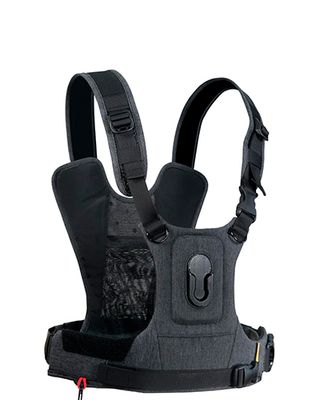
Combining a chest mount and optional side-holster, the G3 can carry up to two cameras securely without them dangling. We love the quality of the materials and the amount of padding and support.
Read more below ↓
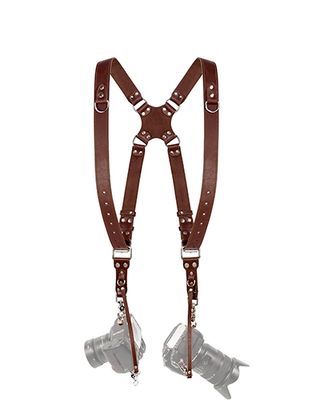
This high-quality leather harness provides a more elegant solution for formal situations, and it envelopes the shoulders for a more comfortable fit than cheap camera harnesses.
Read more below ↓
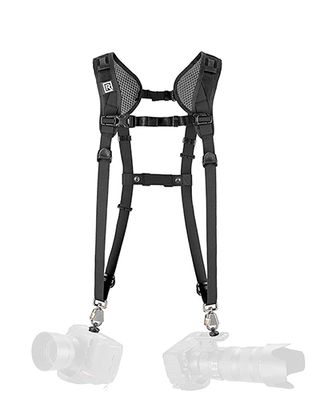
This lightweight option provides just enough support to carry a couple of cameras, although rocking a super telephoto lens like in the example image isn't going to be hugely comfortable.
Read more below ↓

For small cameras or for binoculars, this classy option from Zeiss provides great build quality and a handy quick-release mechanism. It's also nicely compact.
Read more below ↓
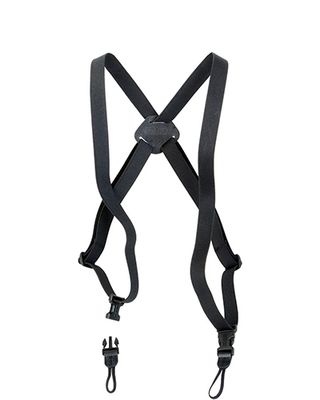
This is a basic, cheap camera harness that isn't going to do the job for a heavy setup, but it's a discreet and affordable option for small compacts or mirrorless cameras with prime lenses.
Read more below ↓
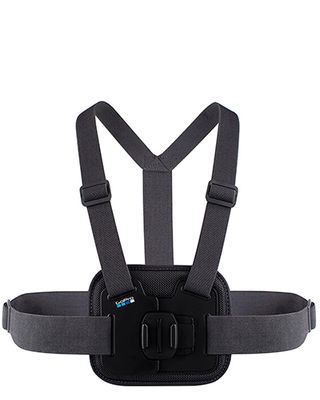
Lightweight and flexible, GoPro's own Chesty Works is perfect for chest mounting a relatively recent Hero and Max camera, leaving your hands free for hose taction pursuits.
Read more below ↓
The best camera harnesses
Why you can trust Digital Camera World
The best camera harness overall
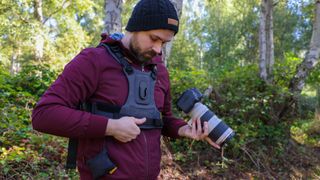
Specifications
Reasons to buy
Reasons to avoid
Need to carry two cameras? Or a camera and a pair of binoculars on a wildlife trip? The CCS G3 is all about eschewing a camera backpack and keeping your camera, or cameras easily accessible for when you need them. There's the option to buy the chest-mounted harness alone or to go for a combo that combines this with a side-holster.
Our reviewer loved this second option when he tested it. He found that by keeping the weight of one camera on the chest and another on the waist, the whole setup felt balanced, even when used with two heavy DSLRs, though it makes sense to keep the heaviest camera with the longest lens on the chest, since the mount also covers your back, distributing the weight well.
We thought the twist and lock system was clever. Clasps rotate through 90º to be slotted in and out. The clasp fits to a camera’s tripod thread and also sports its own tripod thread, which we found allows a camera to be removed and replaced really quickly.
We found it best to leave a camera strap on the chest-mounted camera but not on the camera in the side-holster in order to avoid tangles. That slide holster can also be attached to the shoulder straps of a camera backpack, making the CCS G3 handy even on days when you decide not to actually use it.
All in all, we think this is a great option for anyone who tends to walk significant distances with their cameras and wants to have them easily accessible for whenever the opportunity for a shot appears. This is most likely to appeal to landscape and nature photographers, but we think that even photojournalists could benefit from this robust and practical harness combination.
See our full Cotton Carrier CCS G3 review
For a less bulky set-up, Cotton Carrier also has sling-style harnesses. See our Cotton Carrier Skout harness review for that.
The best camera harness for wedding photographers
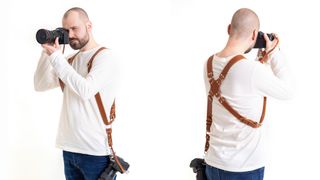
Specifications
Reasons to buy
Reasons to avoid
Here's a very different solution for carrying two cameras. The option above may look a little too rugged and heavy-duty for some use cases, especially if you're not doing the majority of your photography in the great outdoors. For a smart, good-looking alternative, we love this harness strap for Coiro.
As you'll see below, there's no shortage of this kind of camera harness on the market, so picking from among the many options will often come down to budget and the quality that you're after. This is among the best we've seen, boasting quality padded leather straps that cross behind the shoulder blades to take the weight of your camera or cameras as comfortably as this kind of harness can.
It's fully adjustable, and there are two straps for attaching your cameras: one attached to the camera’s metal eyelets, where the manufacturer’s strap is typically attached, and the other can attach to the 1/4-inch tripod thread. You might not want to use the second if you tend to leave your tripod plate on your camera, but having the option to attach two straps at once can provide some extra peace of mind for the safety of your gear.
Best light camera harness
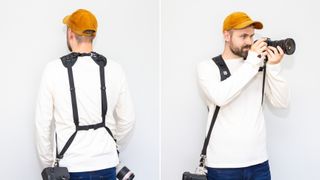
Specifications
Reasons to buy
Reasons to avoid
This is another harness designed to carry up to two cameras in a similar way to the Coiro harness at number two on our list. This one is an option if you don't want to buy leather, and we found it to be comfortable and versatile.
It can be used in two configurations: over both shoulders to carry two cameras or across one shoulder and the torso to carry one camera on your opposite side. We found both options to be comfortable and practical. There could be more padding, but the shoulder pad is secure. Wearing the harness over an equipment vest is also a practical option.
We like the inclusion of adjustable stops on the straps to keep the cameras at arm's length. There's still some lateral movement, but some users have discovered that it's possible to reduce that by passing the strap through carabiners attached to either side of a belt.
See our full BlackRapid Double Breathe review
The best camera harness for small cameras
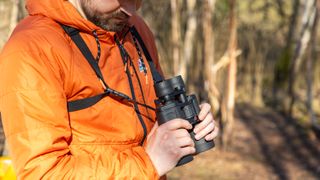
Specifications
Reasons to buy
Reasons to avoid
Zeiss is a highly regarded binoculars brand, but although this simple harness is designed primarily for binoculars, there’s no reason it can't be used with a small camera. Like the OpTech BINO-CAM harness further down our list, it consists of a simple wearable harness that you put on as you would a coat, slipping your arms into two loops. They’re joined on your back by a leather pad, and the straps are fully adjustable.
Also like the OpTech BINO-CAM harness, the Zeiss Comfort Carry Harness uses loops to attach to a camera’s strap eyelets, with clips to easily attach and detach a camera from the harness. The two clips can also be attached to each other to form a small carry handle for your camera. We found this harness feels comfortable and unobtrusive to wear, and we like the fact that it can be used as a more secure replacement for the typical manufacturer's camera strap, which can feel heavy around the neck.
Read our full Zeiss Comfort Carry Harness review
The best cheap camera harness
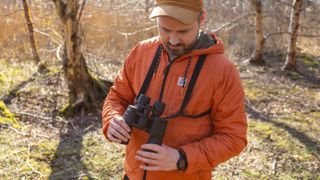
5. OpTech BINO-CAM harness
Specifications
Reasons to buy
Reasons to avoid
This is another camera harness based on the same concept, but it's a lot more economical than the Coiro and BlackRapid harnesses that we've already mentioned. We can confirm that you do indeed get what you pay for, and the cheaper price is immediately noticeable in the lack of padding or useful features like adjustable stops or safety straps.
We'll make it clear upfront that this harness is not going to be comfortable for those carrying a heavy camera and lens combination. It’s rudimentary stuff, with two loops around shoulders joined-up by Uni-Loops that attach to a camera (or a pair of binoculars). However, if you use a small compact or a mirrorless camera wearing a prime lens, we think it can make relatively discreet option for hands-free street photography.
Using its clasps, it’s possible to clip-in and clip-out a camera really easily. We tested the non-stretch webbing version, which we found to be effective for a small camera if all you really want to do is leave it idle and avoid camera straps, though it’s also sold as an elastic version.
The best camera harness for action cameras

6. GoPro Chesty v2
Our expert review:
Specifications
Reasons to buy
Reasons to avoid
Can you strap a GoPro to your chest? Of course you can! The best action cameras need to be hands-free devices, so GoPro has a solution of its own for when you need to keep your hands free but don't have anything to attach your camera to.
It comprises a central pad strung between two adjustable shoulder straps that can fit over ski jackets. There’s a large quick-release buckle let clasp built-in to the pad whose size adds some extra stability while also making it easy to release when you want to.
We can see plenty of scenarios where the Chesty mount will work really well, from hiking to skiing and mountain biking and hiking. The pad has a breathable backing, and the setup is light and flexible, helping us to forget that it's there. It's a nice balance between comfort and practicality and we think the price is quite reasonable too.
See our full GoPro Chesty v2 review
Read more: The best GoPro accessories
The best modular camera harness
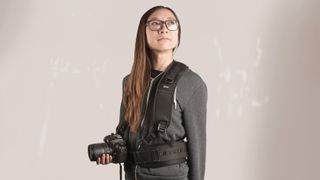
7. ThinkTank Pixel Racing Harness V3.0
Our expert review:
Specifications
Reasons to buy
Reasons to avoid
We'll point out immediately that the third incarnation of the ThinkTank Pixel Racing Harness requires accessories to get the full benefits from it. However, that's also part of its appeal. It consists of shoulder pads, a sternum strap and a belt, which helps to take more weight than what we would find comfortable to carry on the shoulders alone.
Two different belts – one padded and one thin-skinned – are available, and there are no fewer than 23 accessories for the belt and the harness. Yes, 23! These include lens pouches for up to 600mm lenses (using vertical zippers) that hang down from the belt, a camera clip, and gear pouches galore. These all have built-in rain pouches and do a great job of keeping gear at hand but protected.
We think there's a lot to be said for the versatility that the set-up provides. It's ideal for those who like to wear their camera gear, but you only need to buy the accessories that you need for your personal camera setup. The downside is that the cost can mount up, although the base harness can be used alone to hang a camera from your chest by its strap eyelets. There's also a handy phone holder in one of the shoulder straps.
The best belt camera harness
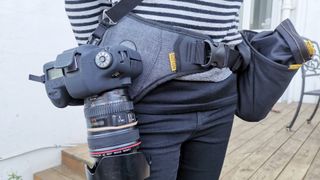
Specifications
Reasons to buy
Reasons to avoid
We've already commended the quality of Cotton Carrier camera harness at the top of our list with the heavy-duty CCS G3. If you liked the look of the hip sling in that setup but don't fancy the full upper-body chest mount, the brand also has the SlingBelt & Bucket System. This comprises a sling belt for a single camera, which sits on one hip, and a lens bucket, which sits on the other.
An attachment fits to your camera's 1/4-inch tripod thread using an Allen key. It has its own 1/4-inch tripod thread on the bottom so that you can still use a tripod and a twist-and-lock mechanism that allows the camera to slip into the sling. The required Allen key is included, but you'll need to find somewhere to store it if you want to remove or mount the attachment when you're out.
When we reviewed it, we found the quality of the materials and build to be what we have come to expect from the brand. The harness feels reassuringly robust and looks premium. That said, our reviewer did also think it looked a bit like a fanny pack (a bum bag for those in the UK). It might not be comfortable to use with a long, heavy lens, but we found it to be a practical hands-free way to carry a camera for lighter setups, transferring the weight to the hips. We would like to see a lid on the lens bucket, but the two sizes of DryBag included fold over at the top to protect contents from the elements.
Read more: Cotton Carrier SlingBelt & Bucket System review
How to choose the best camera harness
The best camera harness for you will depend on your priorities and your budget. One of the first things to consider is how many cameras you want to carry on you. Can you make do with just the one, or do you need to have two cameras with different lens fitted for jobs that require having options?
Many dual harnesses leave the two cameras dangling by your side, which can make manoeuvring awkward. We like the Cotton Carrier CCS G3 at number one on our list because it allows two cameras to be carried but keeps them close to the body.
The next thing to consider is what style of harness you want and how much comfort you need. If you only have a small camera and won't be wearing the harness for very long periods, you might be able to get away with one of the very cheap camera harnesses around. But these have no padding, and wearing them for a long period with a DSLR or a mirrorless camera fitted with a hefty lens would be torturous. If you want to carry two heavy setups, you will almost certainly want a sturdy harness like those at numbers one and two in our guide above, and ideally one with padding.
Finally, you may also want to consider looks. A rugged camera harness with lots of padding might look just the thing for landscape photography on a trek, but it might not be the look if you're working a wedding or a classy awards ceremony.
How we tested the best camera harnesses
We base our buying guides on a mix of hands-on testing in the field carried out by our writers, all photographers themselves, and a detailed evaluations and comparison of specs, features, brand reliability and value for money. We also consult customer reviews and take into account feedback from other working photographers.
When testing camera harnesses, we pay attention to the quality of materials and build, comfort and, crucially, how the harness works in practice, and what camera gear it is suitable for carrying. We use camera harnesses in real-world situations out on photo shoots, wearing them for an extended period to get a genuine impression of how comfortable and practical they are to use. For this guide, we have also considered pricing in order to recommend camera harnesses for different budgets.
FAQs
What is a camera harness?
A camera harness is a type of camera strap that allows you to carry your camera, or cameras, hands-free while still keeping them easily accessible (i.e., not stowed away in a bag). They can come in several different forms, with most camera harnesses spreading the weight of your gear across the torso and shoulders. This can make it more comfortable to carry a heavy camera for extended periods, whether you're hiking or working at a wedding, and it can also help to prevent neck and shoulder pain.
How does a camera harness work?
The basic concept behind most camera harnesses is that they sit over the torso to take a camera's weight, while a proprietary attachment fits to the camera's tripod screw and/or strap eyelets. Most of the best camera harnesses a clip-on, clip-off system, making them easy to mount while remaining secure. When they hold the camera can vary from the chest or shoulder to the hips or hanging by your side.
What extra features come with the best camera harnesses?
If you're wondering why the price of camera harnesses can vary so much, it's usually because some of the pricier camera harnesses have extra features, as well as better materials and more comfortable designs. For example, some include a quick release system, which allows the photographer to quickly remove the camera from the harness, without having to unbuckle any straps. You might also get a safety tether: a secondary strap that connects the camera to the harness in case the main tether fails.
Also look for lumbar support, which can help to reduce back pain, especially when carrying a heavy camera. Some harnesses also offer add-on holsters for additional cameras or lenses, while others are stuffed with pockets for storing accessories like memory cards or a spare camera battery.
Get the Digital Camera World Newsletter
The best camera deals, reviews, product advice, and unmissable photography news, direct to your inbox!

Jamie has been writing about photography, astronomy, astro-tourism and astrophotography for over 15 years, producing content for Forbes, Space.com, Live Science, Techradar, T3, BBC Wildlife, Science Focus, Sky & Telescope, BBC Sky At Night, South China Morning Post, The Guardian, The Telegraph and Travel+Leisure.
As the editor for When Is The Next Eclipse, he has a wealth of experience, expertise and enthusiasm for astrophotography, from capturing the moon and meteor showers to solar and lunar eclipses.
He also brings a great deal of knowledge on action cameras, 360 cameras, AI cameras, camera backpacks, telescopes, gimbals, tripods and all manner of photography equipment.